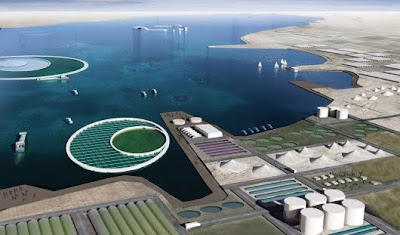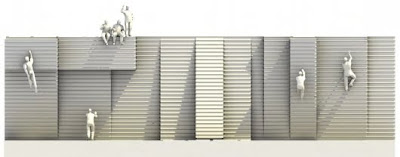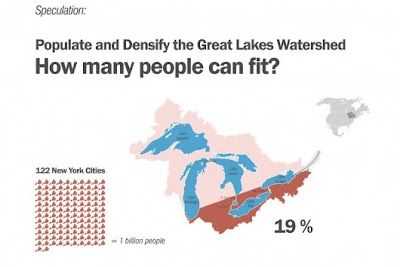[post corrected on 12.13.09]
I have been remiss in posting about the WPA 2.0 competition beyond this initial post way back when… it’s been exciting to see both the professional and student awards coming together into a fabulous compilation on information on the reinvention of public infrastructure. So alas, it was time to capture at least a portion of the great ideas that came from the submittals.
Carbon T.A.P // Tunnel Algae Park
The grand prize winner of the competition was: “… the brainchild of PORT architects Andrew Moddrell and Christopher Marcinkoski of Chicago and New York. The proposal uses algae pontoons to capture mobile-source carbon-dioxide emissions along New York City’s transportation arteries and employ them in bio-fuel production, creating an urban park with structured wetlands, aquatic and avian habitat, recreation amenities, as well as high speed bike lanes and public promenades. The jury… was unanimous in its decision, citing two primary qualities: The floating, carbon-capturing bridge between Brooklyn and Manhattan would be a visible marker for the tunnel hidden below, and the periodic rotation of the parkway across the river had the power to reshape the image of the city.”

:: images via Bustler
There is also a video of the winner here:
The remainder of the finalists are captured on the WPA site (provided by competition sponsor cityLAB), from this post on Bustler. The other five finalist entries are found below:
HYDRO-GENIC CITY, 2020
“Through the development of integrated, ecologically sensitive, and aesthetically compelling architecture, this proposal seeks to turn the often mechanistic infrastructural system of LA – in this case, the waterworks – into an interactive and sensory series of public nodes. As mist platforms/light rail stations, urban beaches, energy producing water treatment plants, solar-panel encased water towers, pools, and aquatic parking lots, these water-based landscapes become organizational moments for community building.”

:: images via Bustler
Local Code / Real Estates
“Tapping into the Department of Public Works catalogue of San Francisco’s “unaccepted streets” (those no longer maintained by the city and hence neglected and often impassable), this proposal utilizes various computer models and statistical data to determine and propose new public, park-based uses for these interstitial spaces. Over 1600 of these sites are available, a selection of which are analyzed for the proposal in terms of elevation and topography, microclimate, soil type, hydrology, population density and demographics, economics, crime, and existing networks to determine the most parametrically appropriate transformation of use.”
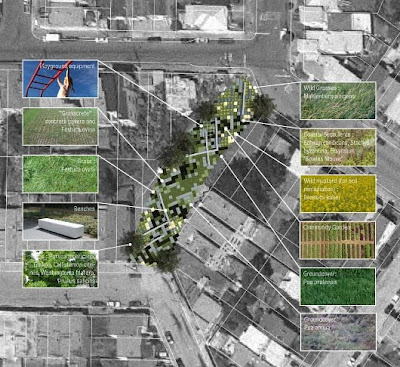
:: images via Bustler
Coupling Infrastructures: Water Economies/Ecologies
“This proposal focuses on America’s impending water crisis, particularly in cities in the southwest where growth is high and water availability is limited, by rethinking water use, distribution, and storage. Using the Salton Sea as a model site, the proposal envisions “converting the Sea back to its recreational use while allowing multiple economic opportunities for the production of water, salt, and more efficient greenhouses.” Here “infrastructure [becomes] an extension of nature.” Island pods provide for salt harvesting, recreation, and new animal habitats.”

:: images via Bustler
Border Wall as Infrastructure
“[T]here exists far more potential in a construction project that is estimated to cost up to $1,325.75 per linear foot.” Recognizing the high cost, limited effectiveness and unintended natural consequences of the new, multi-layered US/Mexico border wall (disruption of animal habitats, diversion of water runoff that has caused new flooding in nearby towns), this proposal names 30 alternatives (covering nearly the whole of the Mexican alphabet, literally from Aqueduct wall to Zen wall) that might better combat the energy crisis, risk of death from dehydration, disruption of animal habitat, loss of vegetation, negative labor relations, missing creative vision and lack of cross-cultural appreciation likely in the government sponsored version.”
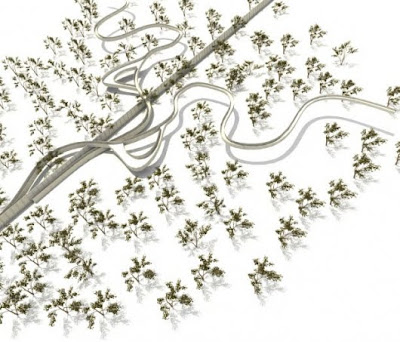
:: images via Bustler
1,000,000,000 Global Water Refugees
“Combining the rust belts’ loss of population with its abundance of fresh water, this proposal outlines a strategy for redensification of under-utilized post-industrial landscapes (parts of Milwaukee, Buffalo, Detroit, Chicago, and Cleveland) by relocating populations threatened by water scarcity.”

:: images via Bustler



